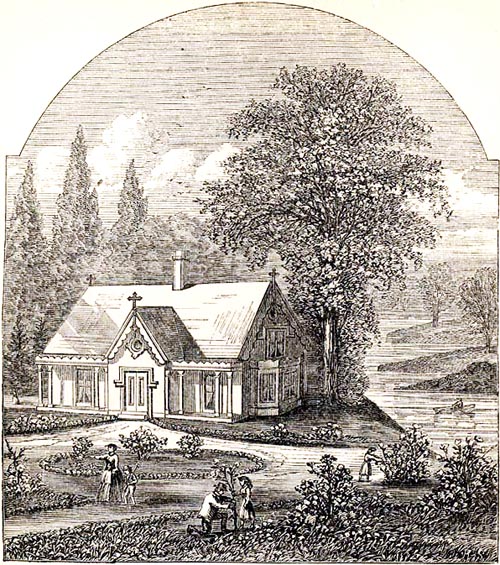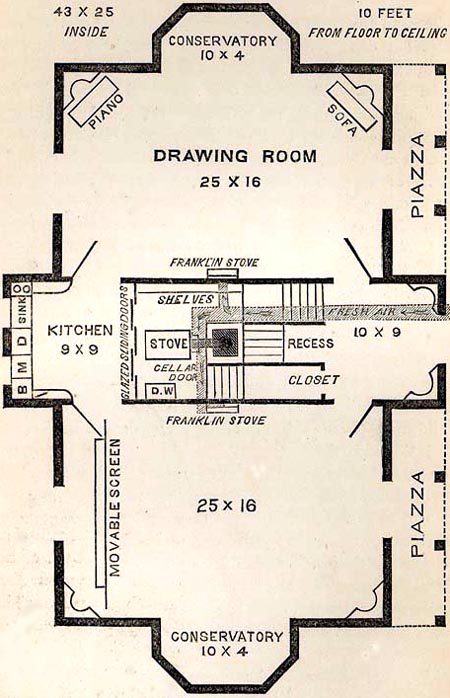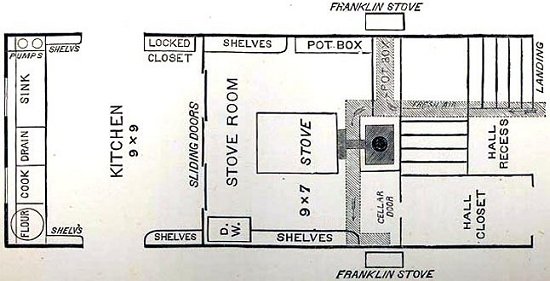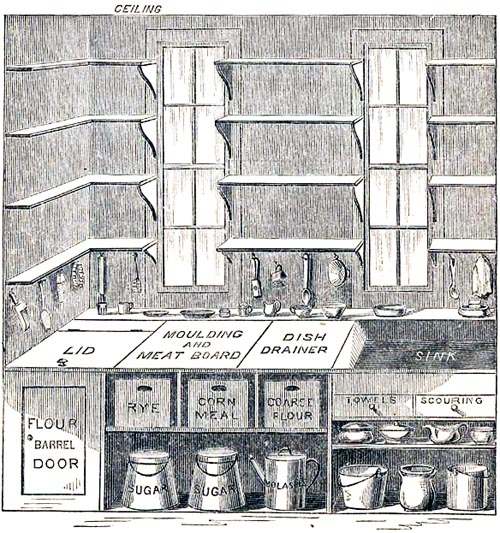The American Woman's Home
Today, architectural historian Margaret Culbertson tells us about a cabin, a mansion, and a model home. The University of Houston presents this series about the machines that make our civilization run, and the people whose ingenuity created them.
We find a remarkable model home in an 1869 book, The American Woman's Home. Written by two famous sisters, the book is devoted to the wide range of subjects known in the 19th century as "domestic economy," which included cooking, care of children, and all things related to the home.
Who were these domestic experts? The older sister was Catharine Beecher. She earned national recognition in the 1840's as an educator and author of a popular manual for homemakers. Her younger sister and co-author is the real surprise -- Harriet Beecher Stowe. Her 1852 novel Uncle Tom's Cabin was an international sensation and a major influence in the movement to abolish slavery in the United States. Her non-fiction writing on domestic matters is rarely noted today. Determining which sister wrote which parts of the book is the stuff of scholarly debate, but they both had strong opinions about house design, so let's look at their model home.
The book shows an exterior view of a small cottage, typical of the time. But inside the cottage we find detailed treatments for areas often ignored by male designers of the nineteenth century, particularly the kitchen. The cook's galley in a steamship inspired their plan. Open shelves line the kitchen walls, and shelf boxes, described as cheaper and better than drawers, hold dishtowels, cooking utensils, and foodstuffs. The kitchen illustrations would fit neatly into today's catalogues devoted to organizing our kitchens and closets.
To make the house affordable, the sisters had to make it small, and one room serves as a sitting, dining, and bedroom. But the niceties of nineteenth-century middle-class appearances were maintained by a novel movable partition on wheels that also incorporated the functions of wardrobe and chest of drawers.
Ironically, they produced this economic and efficient design to help support Harriet's much more extravagant house in Hartford, Connecticut. Harriet had used the money from Uncle Tom's Cabin to build a large Victorian dream house with a two-story glass conservatory. But the huge cost of maintaining it forced her to take on multiple writing projects, including her collaboration with Catharine on The American Woman's Home. The book was well received, but it neither transformed American home design not did it save Harriet's mansion. It had to be sold a year after the book came out.
The Beecher sisters run counter to modern sensibilities in the way they limit women's sphere of influence to the home. But their traditional prose actually contained revolutionary ideas. Various chapters address the need for exercise, both physical and mental, fresh air, and clothing reform. That meant rejecting tight corsets that could do physical damage. Chapters devoted to ventilation and heating of the home anticipated modern central heating. And the principles of efficiency and flexibility of space embodied in their model home continue to inspire designers today.
I'm Margaret Culbertson from the Museum of Fine Arts Houston, where we too are interested in the way inventive minds work.
(Theme music)
Margaret Culbertson is Director of the Hirsch Library, Museum of Fine Arts, Houston, and author of Texas Houses Built by the Book.
C. Beecher and H. Beecher Stowe, The American Woman's Home. New York: J. B. Ford and Company, 1869. (The original edition was reprinted in 2002 by the Rutgers University Press.) The text of this book may be read on line, courtesy of the Project Gutenberg.
R. Banham, The Architecture of the Well-Tempered Environment. 2nd edition. Chicago: University of Chicago Press, 1984.
M. Ierley, Open House: A Guided Tour of the American House, 1637-Present. New York: Henry Holt and Co., 1999.
B. A. White, The Beecher Sisters. New Haven: Yale University Press, 2003.
Margaret Culbertson expresses her thanks to Drexel Turner of the UH College of Architecture for suggesting the topic.




Images from The American Woman's Home, courtesy of the Museum of Fine Arts, Houston